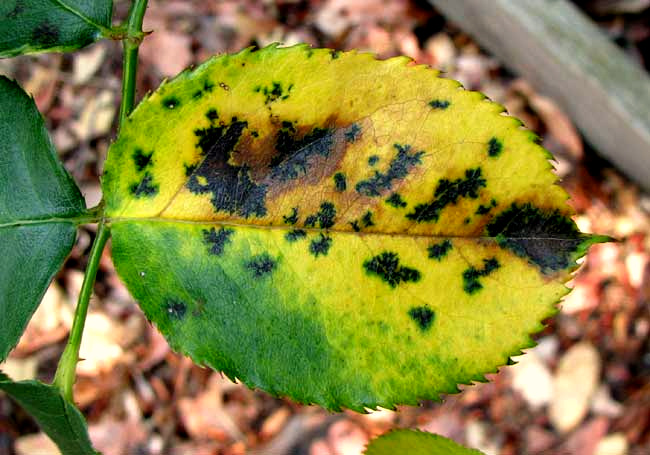Excerpts from Jim Conrad's
Naturalist Newsletter

from the September 27, 2009 Newsletter, issued from the Siskiyou Mountains west of Grants Pass, Oregon:
BLACK SPOT DISEASE ON ROSE LEAVES
Each morning for the last couple of months as I watered Anita's flower garden I've been watching some of her rosebush leaves develop the situation shown above.
The disease shows up as blackish spots surrounded by a yellow halo on an otherwise green leaf. I've seen the same spotting on rosebushes in many states and countries so I figured it was a common, easy to diagnose disease, and that was right. I read that by late summer most roses everywhere have at least a little of it. It's known as Black Spot and it's caused by the fungus DIPLOCARPON ROSAE. Like the Tar Spot disease we saw on a Bigleaf Maple leaf last week, it's a member of the Ascomycota, so it has a similar lifecycle. Basically it overwinters in leaf litter, then infects new growth in the spring, and starts showing up as leaf spots in the fall.
The disease may sap a bit of the bush's energy, reducing flower size and such, but usually it's not considered a serious disease. All fungal diseases like this I know of benefit from heat and humidity, so watering the roots instead of spraying the plants would help control it, as would planting roses where there's good air circulation. Cleaning up dead leaves at the end of the season and pruning old canes also would help.
But, no matter what you do, eventually your roses will probably get a little Black Spot. I wouldn't worry about it. Actually, it's kind of pretty.